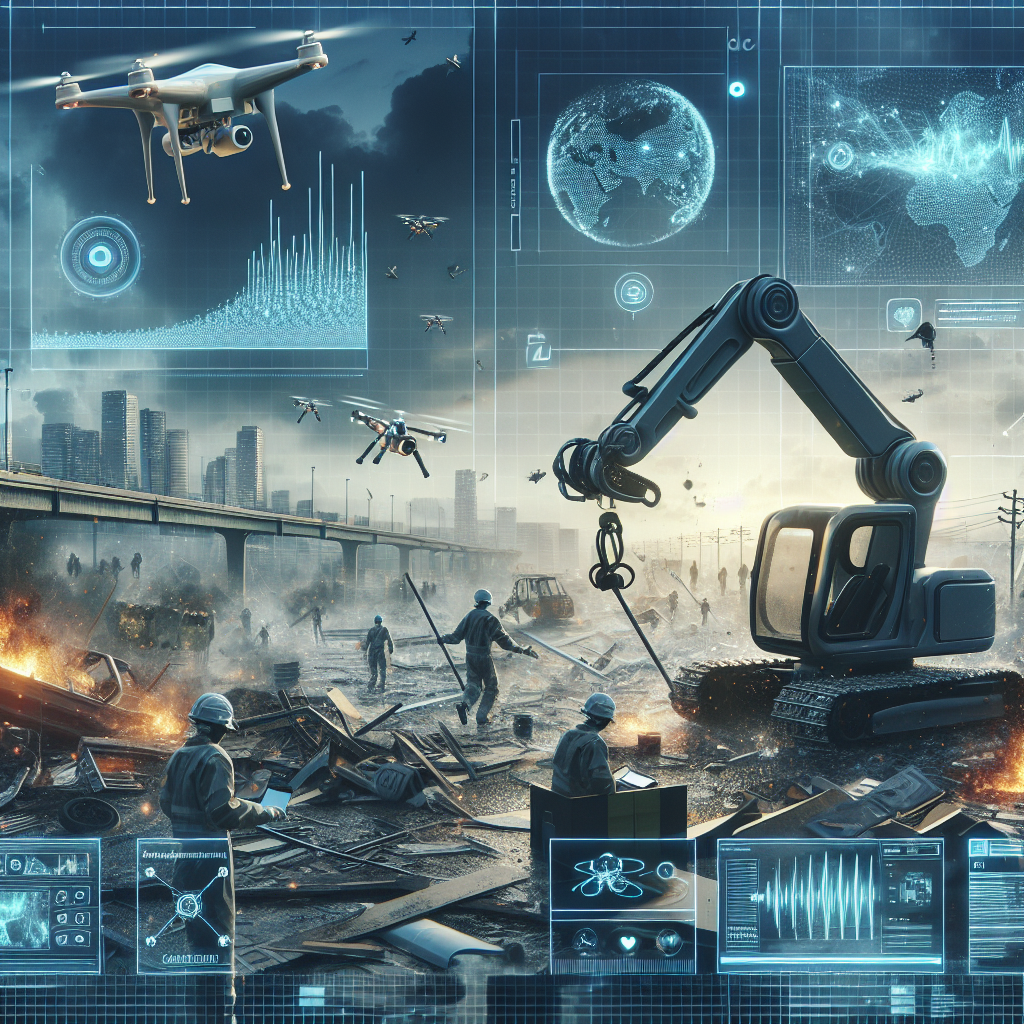In recent years, the use of artificial intelligence (AI) in disaster recovery has become increasingly prevalent. With the rise in natural disasters, such as hurricanes, wildfires, and earthquakes, there is a growing need for innovative technologies to improve resilience and response efforts. AI offers a unique set of capabilities that can significantly enhance disaster recovery processes, from predicting and mitigating risks to facilitating swift and efficient response actions.
AI has the potential to revolutionize disaster recovery in several ways. One of the key benefits of AI is its ability to analyze vast amounts of data in real time, enabling organizations to make informed decisions quickly. For example, AI-powered algorithms can analyze weather patterns, seismic activity, and other environmental factors to predict the likelihood of a disaster occurring. This early warning system allows authorities to take proactive measures to minimize the impact of a disaster, such as evacuating residents or reinforcing infrastructure.
Furthermore, AI can improve the efficiency of disaster response efforts by automating certain tasks and streamlining communication between first responders and emergency management teams. For instance, AI-powered drones can be deployed to assess damage and locate survivors in hard-to-reach areas, reducing the risk to human responders. AI can also help coordinate resources more effectively by optimizing routes for emergency vehicles and prioritizing the allocation of supplies based on real-time needs.
In addition to enhancing response efforts, AI can also play a crucial role in the recovery phase of a disaster. By analyzing data from affected areas, AI can identify areas of critical need, such as damaged infrastructure or displaced populations, and help organizations prioritize their recovery efforts. AI can also assist in the reconstruction process by generating digital models of destroyed buildings and infrastructure, enabling engineers to design and implement more resilient structures.
Despite the significant potential of AI in disaster recovery, there are also challenges and limitations to consider. One of the main concerns is the reliability of AI algorithms, as they are only as good as the data they are trained on. Inaccurate or biased data can lead to flawed predictions and suboptimal decision-making, potentially worsening the impact of a disaster. To address this issue, organizations must ensure that their AI systems are regularly updated and tested with high-quality data to improve their accuracy and reliability.
Another challenge is the ethical implications of using AI in disaster recovery. For example, there may be concerns about privacy and data security when collecting and analyzing sensitive information about affected populations. Additionally, there is a risk of AI exacerbating existing inequalities by prioritizing certain groups or areas over others in the allocation of resources. To mitigate these risks, organizations must establish clear guidelines and protocols for the ethical use of AI in disaster recovery and ensure that they comply with relevant regulations and standards.
Despite these challenges, the benefits of incorporating AI into disaster recovery far outweigh the risks. By harnessing the power of AI, organizations can improve their resilience to disasters, enhance their response capabilities, and accelerate the recovery process. As AI technology continues to evolve and improve, it is crucial for organizations to invest in AI solutions that can help them better prepare for and respond to disasters in the future.
FAQs:
1. What is the role of AI in disaster recovery?
AI plays a crucial role in disaster recovery by analyzing data, predicting risks, optimizing response efforts, and facilitating the recovery process. By harnessing the power of AI, organizations can improve their resilience to disasters and enhance their ability to respond effectively in times of crisis.
2. How can AI help predict and mitigate risks in disasters?
AI-powered algorithms can analyze data from various sources, such as weather patterns, seismic activity, and infrastructure vulnerabilities, to predict the likelihood of a disaster occurring. This early warning system allows authorities to take proactive measures to mitigate risks and minimize the impact of a disaster.
3. What are the challenges of using AI in disaster recovery?
Some of the challenges of using AI in disaster recovery include the reliability of AI algorithms, ethical concerns about data privacy and security, and the risk of exacerbating existing inequalities. Organizations must address these challenges by ensuring the accuracy and reliability of their AI systems and establishing clear guidelines for ethical use.
4. How can organizations ensure the ethical use of AI in disaster recovery?
Organizations can ensure the ethical use of AI in disaster recovery by implementing clear guidelines and protocols for data collection and analysis, complying with relevant regulations and standards, and prioritizing transparency and accountability in their decision-making processes. By following these principles, organizations can mitigate the risks of AI and maximize its benefits in disaster recovery efforts.

